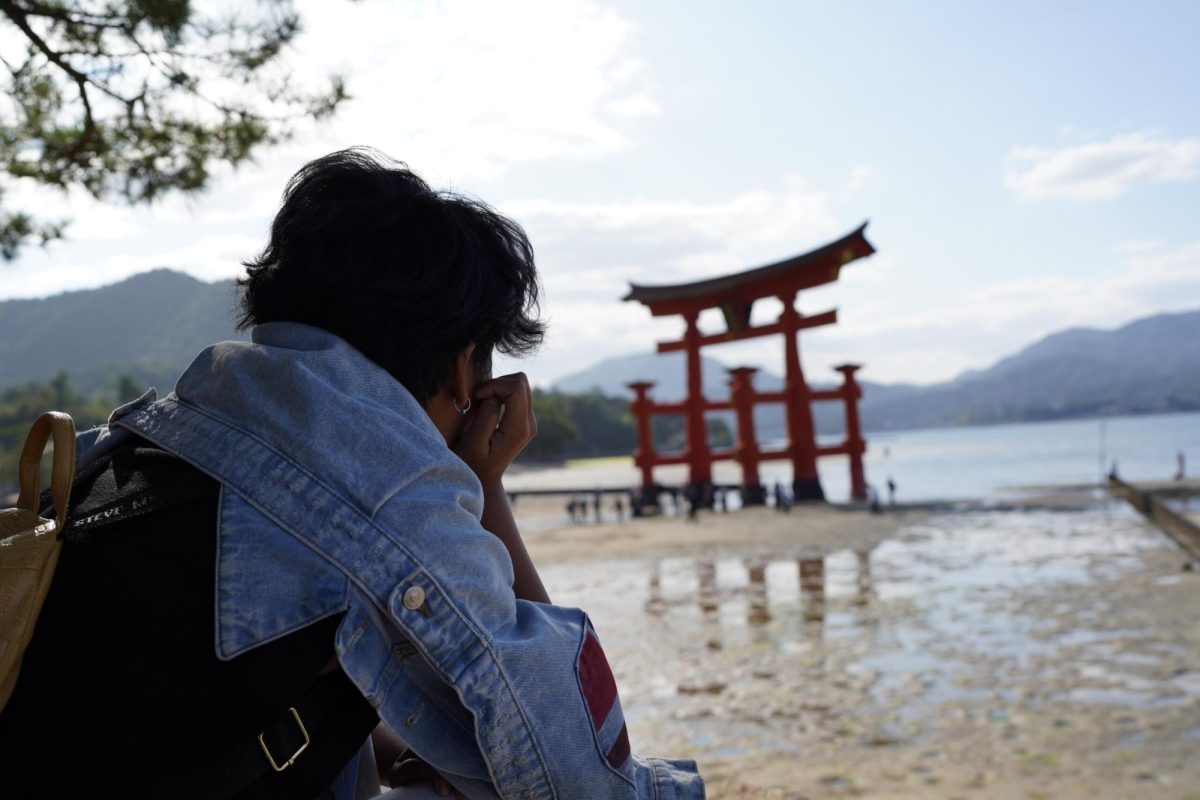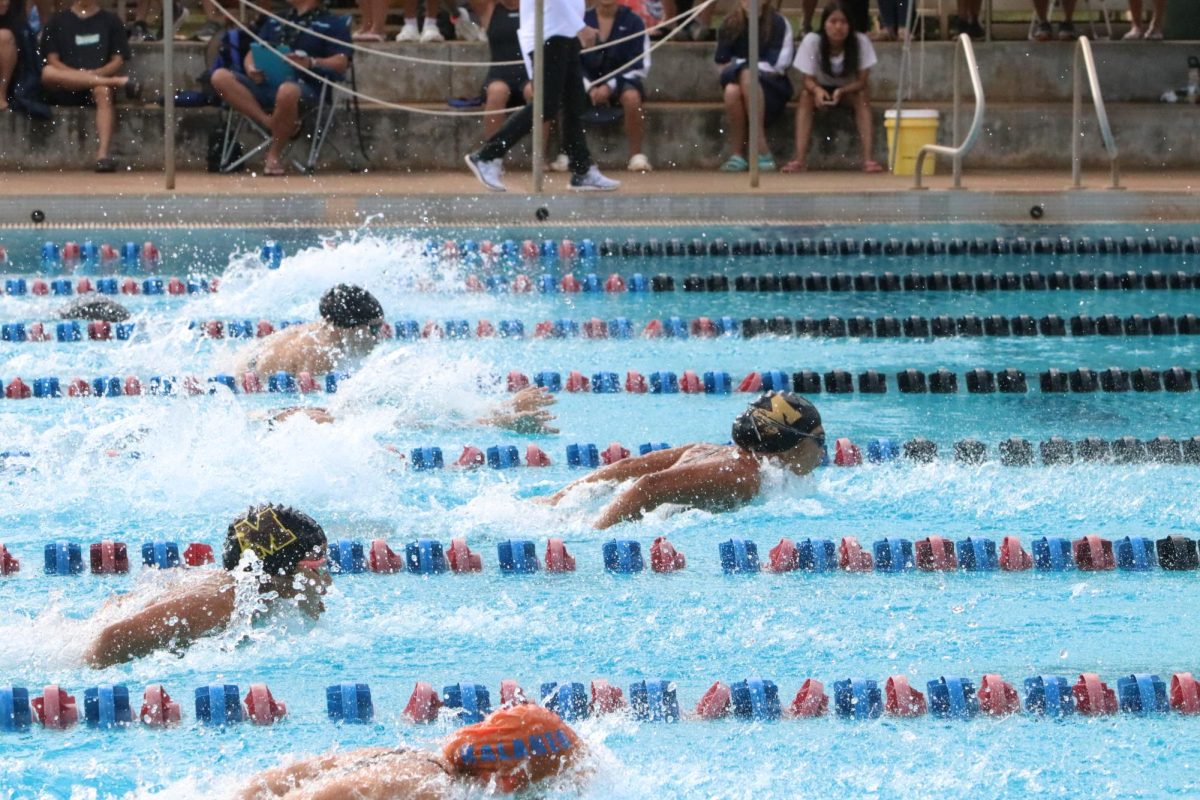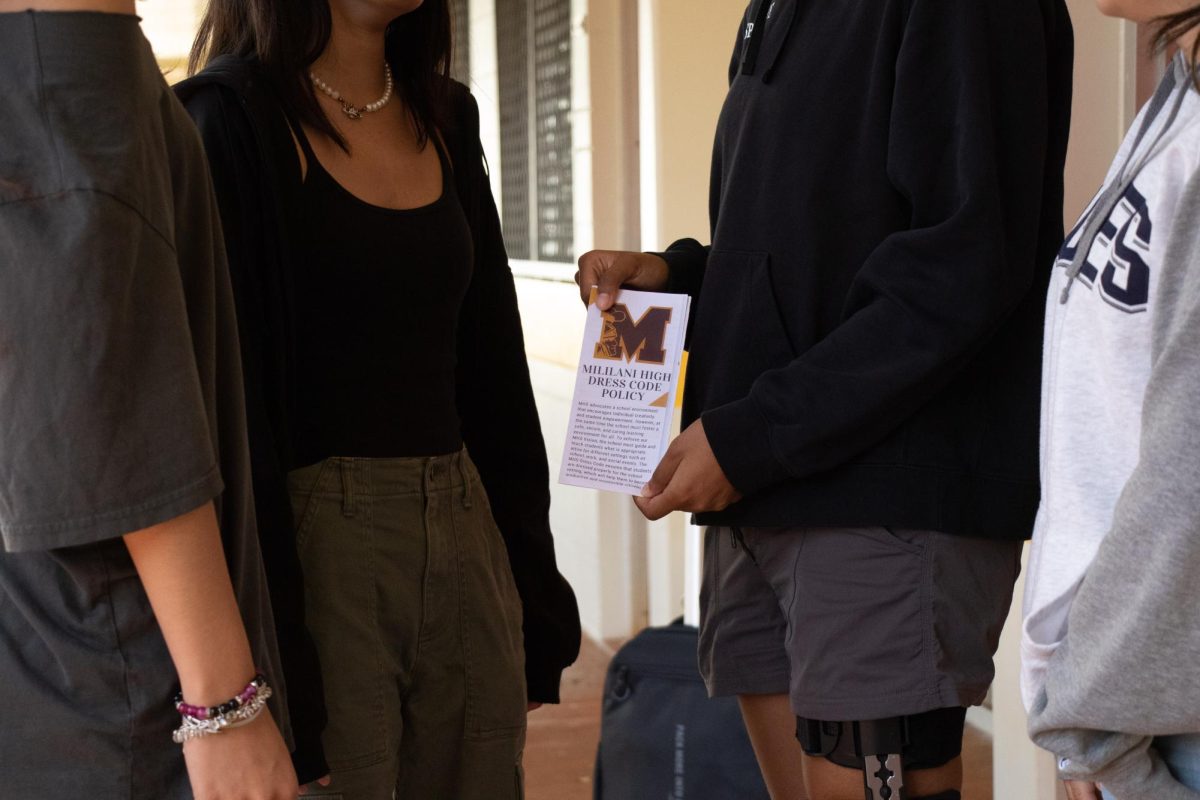Mililani Disaster Preparedness Team
October 4, 2018
This past year, a group in Mililani has taken it upon themselves to ensure that the community is prepared in the event of a natural disaster. Organized primarily by retired brigadier general and alumnus of the first graduating class of MHS Braden Sakai, the Mililani Disaster Preparedness Team (MDPT) is run by the community for the community.
“Every community has to be able to sustain themselves. (And) the responsibility of taking care of the residents of Mililani should come from each residence,” said Sakai.
Because Hawaii is the most isolated population in the world, there is an even greater need to be self sustainable. Having a 14 day kit is important for not only during a natural disaster, but after as well. “Should a hurricane or tropical storm make a direct hit on Oahu, Mililani will be isolated. It will be a while before responders will be able to reach Mililani due to debris, downed trees and utility poles (and) lines, and damage to roadways or bridges. Initially, first responders and city and state response will be focused on life saving (and) safety, debris clearance on roads, restoring our port and airport operations, and damage assessments. Our immediate assistance will come from within our community and neighbors,” said MDPT member Anson Kimura. Officer Crystal van Beelen at the Department of Emergency Management (DEM) added, “MDPT and preparedness groups like them are extremely important as they can help in filling the response gap until such time that help arrives post-disaster. Government can’t always be there immediately especially after a major disaster.”
MDPT initially started out of Sakai’s realization that in the event of a natural disaster, he would have to stay at Hickam Air Force Base and be isolated from his family. In addition, cellphone lines may go down and debris may block the road and prevent travel, giving him no way to check in on his family. “When I asked the Mililani (Town Association) what their disaster preparedness plan was, they told me they did not have one. And I knew right away my wife and my kids were on their own,” said Sakai. “I won’t be able to get to my family, so I won’t know if they are good or okay, safe, or what happened. We were gonna be isolated from each other, so that concerned me right away.”
This prompted Sakai to begin MDPT, which immediately consisted of collecting volunteers and starting their training, which is run by the City and County. This training includes exercises such as shelter management, damage assessment and learning how to administer first aid, CPR or AED. “The City and County of Honolulu, Department of Emergency Management encourages everyone to be better prepared for a disaster and become more resilient. When we become aware of a group such as (MDPT) who wish to get their community ready, DEM provides technical guidance as well as supporting the organization with educational materials and subject matter experts as needed,” said van Beelen.
In light of the recent hurricane season, the need for a group like MDPT is growing increasingly apparent. They are working to try and prevent chaos and uncertainty in the community following a natural disaster. “Hawai‘i residents need to take hazards seriously, there is too much complacency and a false sense of security. It’s not a matter of if, it’s a matter of when and it only takes one,” said Kimura. “MDPT is educating its members, developing a team, reaching out to other agencies and responders, and learning about available resources and partners. The time to prepare, identify resources and meet your response partners is now, you don’t want to meet for the first time after an event happens. You want to develop the relationships and know what to do, where to go, who to call and how to reach them beforehand.”
MDPT would be there to step in directly following a natural disaster. Sakai is working to develop a reasonable plan. “I would think within 24 hours to 48 hours, after people kinda come to realization, ‘Okay, this is what I’m dealing with,’ we’re gonna have a predetermined time where we would meet at these rally points. We’ll have volunteers set up where we have a way to call people, or we meet there at a certain time — we’ll start the cycle, ‘You man this area,’ for maybe a few hours, and we start rotating so people, they know where to go, just to seek help, just to talk to somebody,” said Sakai.
Currently, the MDPT volunteers are going through training and seeking more residents to join the team. These volunteers are necessary to make MDPT successful. “MDPT is a voluntary team developing a plan to prepare Mililani to respond and recover from natural or man-made hazards. We need the community to be aware of and participate in the planning and any response. We need their knowledge of their neighborhoods and skills to round out the team. It will take the community and people working to help each other to make the plan work,” said Kimura.
The next meeting for prospective MDPT volunteers will be held Oct. 16 from 6:30 p.m. to 7:30 p.m. at Rec. 2. For more information you can visit their website at mililanidpt.com.



